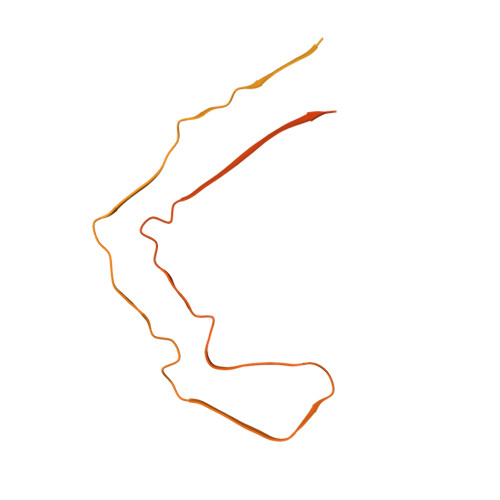Novel tau filament fold in chronic traumatic encephalopathy encloses hydrophobic molecules.
Falcon, B., Zivanov, J., Zhang, W., Murzin, A.G., Garringer, H.J., Vidal, R., Crowther, R.A., Newell, K.L., Ghetti, B., Goedert, M., Scheres, S.H.W.(2019) Nature 568: 420-423
- PubMed: 30894745
- DOI: https://doi.org/10.1038/s41586-019-1026-5
- Primary Citation of Related Structures:
6NWP, 6NWQ - PubMed Abstract:
Chronic traumatic encephalopathy (CTE) is a neurodegenerative tauopathy that is associated with repetitive head impacts or exposure to blast waves. First described as punch-drunk syndrome and dementia pugilistica in retired boxers 1-3 , CTE has since been identified in former participants of other contact sports, ex-military personnel and after physical abuse 4-7 . No disease-modifying therapies currently exist, and diagnosis requires an autopsy. CTE is defined by an abundance of hyperphosphorylated tau protein in neurons, astrocytes and cell processes around blood vessels 8,9 . This, together with the accumulation of tau inclusions in cortical layers II and III, distinguishes CTE from Alzheimer's disease and other tauopathies 10,11 . However, the morphologies of tau filaments in CTE and the mechanisms by which brain trauma can lead to their formation are unknown. Here we determine the structures of tau filaments from the brains of three individuals with CTE at resolutions down to 2.3 Å, using cryo-electron microscopy. We show that filament structures are identical in the three cases but are distinct from those of Alzheimer's and Pick's diseases, and from those formed in vitro 12-15 . Similar to Alzheimer's disease 12,14,16-18 , all six brain tau isoforms assemble into filaments in CTE, and residues K274-R379 of three-repeat tau and S305-R379 of four-repeat tau form the ordered core of two identical C-shaped protofilaments. However, a different conformation of the β-helix region creates a hydrophobic cavity that is absent in tau filaments from the brains of patients with Alzheimer's disease. This cavity encloses an additional density that is not connected to tau, which suggests that the incorporation of cofactors may have a role in tau aggregation in CTE. Moreover, filaments in CTE have distinct protofilament interfaces to those of Alzheimer's disease. Our structures provide a unifying neuropathological criterion for CTE, and support the hypothesis that the formation and propagation of distinct conformers of assembled tau underlie different neurodegenerative diseases.
Organizational Affiliation:
MRC Laboratory of Molecular Biology, Cambridge, UK.














